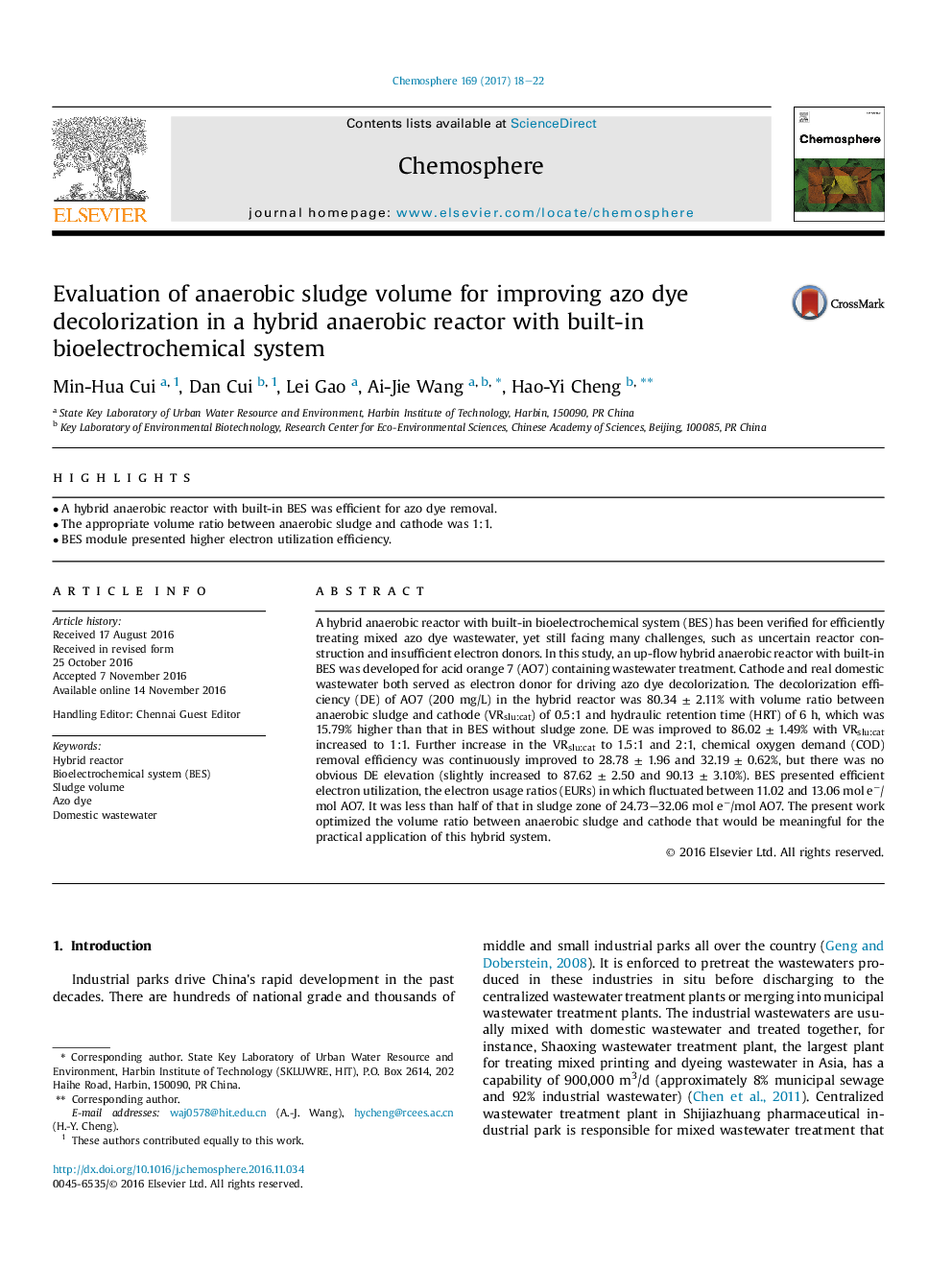| Article ID | Journal | Published Year | Pages | File Type |
|---|---|---|---|---|
| 5747057 | Chemosphere | 2017 | 5 Pages |
â¢A hybrid anaerobic reactor with built-in BES was efficient for azo dye removal.â¢The appropriate volume ratio between anaerobic sludge and cathode was 1:1.â¢BES module presented higher electron utilization efficiency.
A hybrid anaerobic reactor with built-in bioelectrochemical system (BES) has been verified for efficiently treating mixed azo dye wastewater, yet still facing many challenges, such as uncertain reactor construction and insufficient electron donors. In this study, an up-flow hybrid anaerobic reactor with built-in BES was developed for acid orange 7 (AO7) containing wastewater treatment. Cathode and real domestic wastewater both served as electron donor for driving azo dye decolorization. The decolorization efficiency (DE) of AO7 (200 mg/L) in the hybrid reactor was 80.34 ± 2.11% with volume ratio between anaerobic sludge and cathode (VRslu:cat) of 0.5:1 and hydraulic retention time (HRT) of 6 h, which was 15.79% higher than that in BES without sludge zone. DE was improved to 86.02 ± 1.49% with VRslu:cat increased to 1:1. Further increase in the VRslu:cat to 1.5:1 and 2:1, chemical oxygen demand (COD) removal efficiency was continuously improved to 28.78 ± 1.96 and 32.19 ± 0.62%, but there was no obvious DE elevation (slightly increased to 87.62 ± 2.50 and 90.13 ± 3.10%). BES presented efficient electron utilization, the electron usage ratios (EURs) in which fluctuated between 11.02 and 13.06 mol eâ/mol AO7. It was less than half of that in sludge zone of 24.73-32.06 mol eâ/mol AO7. The present work optimized the volume ratio between anaerobic sludge and cathode that would be meaningful for the practical application of this hybrid system.
